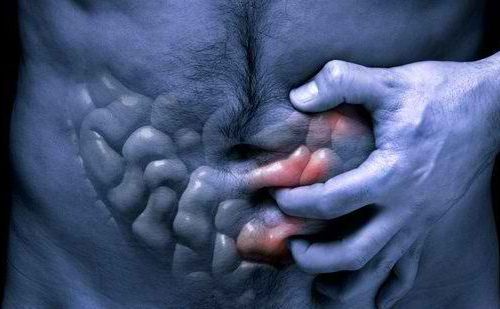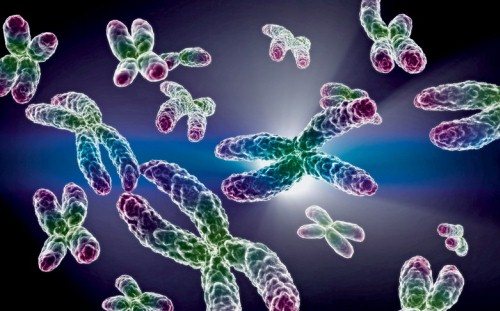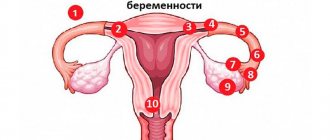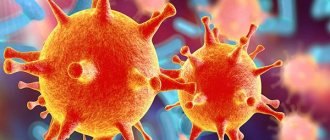Gastroenteritis
Gastroenteritis is a very common intestinal infection.
It is usually caused by a virus, bacteria or parasite (). Here are the symptoms of gastroenteritis:
- stomach pain or cramps
- nausea
- vomit
- diarrhea
- low-grade body temperature
- headache
- fatigue
Viral gastroenteritis is the second most common illness and is often associated with ingestion of contaminated food or water ().
Factors contributing to the development of symptoms
Abdominal pain with diarrhea and vomiting cannot occur on its own. All of these signs are formed only under the influence of negative factors. Rarely are manifestations of the norm.
Often the symptoms are a consequence of food poisoning. This is the most common root cause. The signs should not be ignored, as sometimes the causes of pain, nausea and diarrhea are more serious. Such manifestations can indicate the development of malignant neoplasms in the body.
Negative symptoms often indicate the presence of pathology in the body
Treatment is directly dependent on the root causes of the deviation. Home therapy may be sufficient, or urgent hospitalization may be required. That is why you should visit a doctor and determine the factors contributing to the development of the disorder.
Food poisoning
Patients most often experience abdominal pain with diarrhea and vomiting in the presence of food intoxication. Symptoms appear after eating low quality foods. The disorder can only occur in an acute form.
We have selected useful articles on the topic
The main causes of diarrhea during a trip to the sea and the best ways to eliminate them
02.06.2019
Why does colitis occur in the lower abdomen?
02.06.2019
What foods increase the process of gas formation and why?
02.06.2019
There is a high risk of poisoning after consuming expired products. In this case, abdominal pain, diarrhea and nausea appear a couple of hours after eating.
The main symptoms of deviation are described in the table.
| Pain syndrome | Pain during intoxication of the body is cutting and paroxysmal. The intensity can gradually increase. |
| Nausea | Nausea is frequent and accompanied by vomiting. The secreted fluid may contain bloody streaks. The patient has no appetite. |
| Diarrhea | The urge to defecate is frequent. Their number can reach up to 20 times a day. There is a high risk of dehydration. |
With food poisoning, the patient is at high risk of developing a fever. Abdominal pain can be cramping. The disorder can be either infectious or non-infectious.

The most common cause of nausea, diarrhea and abdominal pain is food poisoning.
Diarrhea may contain remains of undigested food. Sometimes you need to seek emergency help.
Infections
Intestinal infections are usually the result of poor personal hygiene. Typically the disorder manifests itself with the following symptoms:
- painful feeling in the abdomen;
- nausea and vomiting;
- intense diarrhea;
- increased body temperature;
- tearfulness;
- painful sensation in the throat.

Most often, the pathology affects children. The patient complains of increased gas production with a foul odor. The patient is advised to drink plenty of fluids and a set of therapeutic measures.
Gastrointestinal diseases
Symptoms may be present during an inflammatory process in the intestines - enteritis. The violation is accompanied by the following symptoms:
- flatulence;
- nausea and vomiting;
- diarrhea and malaise;
- dehydration of the body;
- increase in body temperature.
The pathology occurs in both acute and chronic forms. The condition, if left untreated, always leads to serious complications.
Another disease of the gastrointestinal tract is enterocolitis. May be a consequence of poor nutrition. It can also occur in acute or protracted form. The disease is accompanied by the following symptoms:
- nausea and vomiting;
- severe abdominal pain;
- intense diarrhea;
- bloating;
- weakness;
- headache.
With pancreatitis, abdominal pain is localized in the lower part. The patient also complains of hiccups and belching. The oral cavity becomes pathologically dry. With nausea, vomiting and diarrhea contain particles of undigested food.

Unpleasant symptoms can develop with enteritis
Digestive cancer
Malignant neoplasms in the stomach may not manifest themselves for a long period of time. Usually the first symptoms are spontaneous pain localized in the abdomen, nausea and prolonged diarrhea. The violation may result from:
- Helicobacter pylori infection;
- hereditary predisposition;
- improper nutrition.
Read also: how to recognize Helicobacter pylori infection.
With such a deviation, it is important to consult a doctor in a timely manner. Especially if the disease is accompanied by a jump in body temperature.

Oncological diseases of the gastrointestinal tract are often hereditary
Diarrhea, nausea and pain in women
Nausea, pain of any intensity in the abdomen and diarrhea are symptoms that may occur during pregnancy. However, usually the listed signs indicate that it is not progressing correctly. A worsened condition may indicate ectopic fetal development. In this case, the woman is also concerned about discomfort in the anal sphincter area.
Pain during abnormal pregnancy is cramping. Possible increase in body temperature. Self-medication is strictly prohibited. All therapeutic measures must be taken by a doctor.
If a woman has abdominal pain with frequent diarrhea and vomiting, the onset of menstruation should be suspected. Such symptoms are caused by changes in hormonal levels.
Eating disorders
Symptoms are often the result of poor nutrition. In this case, the patient may exhibit the following symptoms:
- cramping pain;
- diarrhea or constipation;
- nausea;
- increased gas formation;
- weakness.
Any harmful products can provoke a deterioration in health. No special treatment is required. Just review your diet. Signs may also be the result of an incorrect diet. In this case, there are symptoms of dehydration.

An unhealthy diet can trigger the development of unpleasant symptoms.
Diverticulosis and diverticulitis
Diverticulosis is an intestinal disease in which pouch-like protrusions form on the intestinal wall. Diverticulitis is the medical name for infection and inflammation of these sacs.
Diverticulitis typically causes pain in the lower left side of the abdomen. Here are other symptoms of this disease:
- nausea
- vomit
- diarrhea
- blood in stool
- frequent or painful urination
- fever
The likelihood of developing diverticulosis increases with age. Researchers currently believe that the main cause is a diet low in fiber ().
Severe stomach pain, nausea and diarrhea
Nausea, diarrhea, and pain in the abdominal area can be signs of various diseases. All these symptoms indicate disturbances in the functioning of the digestive system.
Causes of symptoms
Each disease is characterized by certain symptoms and the order in which they appear. The causes of poor health may be inflammatory or infectious. At the first stage, it is important to exclude severe pathologies through a thorough diagnosis of the digestive tract.
Nausea and vomiting can be caused by overeating, and diarrhea can be caused by alcohol abuse or intolerance to certain foods. Inflammation in the digestive tract is accompanied by stool disorder for a long period, and requires diagnosis and comprehensive treatment.
The appearance of all symptoms immediately indicates a serious infectious disease. Additional symptoms will help determine the cause:
- In case of food poisoning, there is a slight increase in temperature and sounds coming from the gastrointestinal tract.
- Blood in the stool is a sign of an intestinal infection.
- With a peptic ulcer, in addition to the main symptoms, the patient experiences frequent belching and bitterness in the mouth.
- During pregnancy, in the early stages, girls often experience stool upset, nausea and vomiting. These are signs of toxicosis.
Pathologies accompanied by symptoms
Nausea, vomiting, and diarrhea can be caused by various pathologies of the gastrointestinal tract and disorders of the digestive system, including:
- Food poisoning.
- Intestinal infections.
- Chronic pathologies of the gastrointestinal tract.
- Inflammatory diseases of organs.
Often similar symptoms are observed in girls in the first trimester of pregnancy. In rare cases, they indicate serious pathologies.
Intoxication of the body
Eating foods of poor quality and products that have expired, as well as those with a high content of nitrates, can be fraught with poisoning.
A person's temperature can rise to 38 degrees. Abdominal pain may be accompanied by a painful sensation in the epigastric region and vomiting. Diarrhea occurs.
Symptoms usually disappear after the body has completely rid itself of toxins.
In case of mushroom poisoning, the patient’s condition worsens after a couple of hours and is accompanied by severe uncontrollable vomiting, stomach cramps and bloody diarrhea. In case of such poisoning, you need to rinse your stomach and call a doctor. The consequences of intoxication can be the most severe.
In case of poisoning with highly toxic substances, disturbances in the functioning of the central nervous system are detected. The patient has hallucinations and lacks coordination.
Intestinal infections
Most intestinal infections are accompanied by stool upset, vomiting, abdominal pain and general weakness of the body.
Rotavirus infection is common among children and children of primary school age. The patient's stool is loose, mixed with mucus and blood, has a grayish tint, there is pain in the abdomen, and the temperature rises. The disease often occurs with headache. The danger of rotavirus infection is the ability to quickly pass from one member of a team to another.
Dysentery is an acute intestinal infection, which is characterized by pain in the lower abdomen, severe diarrhea with blood and mucus. The patient feels weak and nauseated. The infection must be treated in a hospital setting.
Salmonellosis is a serious intestinal infection, the carrier of which can be a sick person or a healthy person who is a carrier of the infection, as well as birds and animals. Symptoms come on suddenly. First, the body temperature rises, then diarrhea begins, and the stomach hurts. The patient is shivering. After a while, severe vomiting develops.
Early toxicosis
Early toxicosis is a common phenomenon in pregnant women. More often caused by neuroendocrine disorders. A woman’s body is subject to physiological changes and cannot adapt normally to pregnancy, which is why toxicosis occurs. Manifests itself in the form of vomiting. Rarely, diarrhea may occur. Weakness appears and blood pressure drops.
A woman should report all symptoms to her attending physician. Depending on the degree of toxicosis, treatment is prescribed. The first degree does not require drug therapy and is treated by following a strict diet.
Colds
Weakness, body aches, temperature above 37 degrees are common signs of colds. Severe forms are accompanied by high temperature, chills and fever. In some cases, adults and children with ARVI experience diarrhea. The cause of loose stools and vomiting during an acute respiratory viral infection is intoxication of the body with viruses and weakened immunity.
Diseases of the abdominal organs
One of the common phenomena among the adult population is gastritis. The reasons for the development of pathology are poor nutrition, infections, stressful situations, and the use of certain medications. Its signs: pain in the stomach immediately after eating food, intestinal upset, nausea, burning in the sternum. The pain is felt in the upper abdomen.
A stomach ulcer is a chronic disease in which a defect appears on the wall of the organ. A symptom of a peptic ulcer is a sharp, stabbing, dull or aching pain that can appear before or immediately after eating. During the acute period, the patient vomits.
Duodenal ulcer is a chronic pathology in which a defect occurs in the duodenal mucosa.
It is characterized by stabbing pains radiating to the right hypochondrium a short period of time after eating. The patient feels nauseous, vomits, feels bloated and has heartburn.
Severe pain reduces appetite. The patient experiences weight loss. During exacerbations, diarrhea develops.
Colitis is an inflammation of the colon mucosa. Dull aching pain in the lower abdomen. Stool disorder in the form of alternating constipation and diarrhea. The patient is worried about weakness, nausea, and a strong smell of stool. Diarrhea in the form of liquid feces with streaks of mucus. After defecation, relief occurs and the pain temporarily subsides.
With pancreatitis or inflammation of the pancreas, the patient has severe pain, localized in different parts: in the right or left hypochondrium, and can involve the lower abdomen. Severe pain provokes painful shock and leads to loss of consciousness. The pathology is often accompanied by vomiting, heartburn, and a temperature above 39 degrees. Loose stools containing particles of undigested food.
Appendicitis is an inflammation of the appendage of the cecum, requiring surgical intervention. Exacerbation of the pathology is manifested by painful sensations in the navel area and a shift of pain to the right.
The patient vomits previously consumed food and bile. The temperature rises to 38 degrees. Diarrhea begins. The pain does not go away, but rather increases. The patient feels dry mouth.
If you suspect appendicitis, you should call an ambulance.
Source: https://morewomen.ru/info/silno-bolit-zhivot-toshnit-i-ponos/
Celiac disease
Celiac disease is a chronic autoimmune disease in which eating gluten-containing foods causes the immune system to attack its own cells. This can cause permanent damage to the small intestine.
Here are the symptoms of celiac disease:
- abdominal cramps
- diarrhea
- nausea
- vomit
- bloating
- nutritional deficiency
- weight loss
- headache
- weakness
- fatigue
- joint pain
- easy bruising and bruising
The National Institute of Diabetes and Digestive and Kidney Diseases estimates that 1 in 141 people in developed countries have celiac disease, although many may not be aware of it ().
Main causes of abdominal pain
Sharp abdominal pain, diarrhea and nausea are the most common symptoms of various pathologies of the abdominal organs. During his life, a person faces similar problems more than once.
Painful sensations appear due to irritation of receptors that are located in the muscles, serous membrane and skin. They arise due to inflammatory changes and poor circulation. The mucous membrane of the intestines and stomach does not contain pain receptors. It does not react to irritations, like skin does. Therefore, a mucosal biopsy does not cause any discomfort at all. Stretching of their walls or a sharp contraction can provoke pain in hollow organs. Spasms can be caused by various reasons, for example, ischemia.
The nerve endings of parenchymal organs are located on the capsule. Pain occurs when this membrane is sharply stretched. If the organ and its capsule increase gradually, irritation of the receptors does not occur.
The outer lining of the vessels is also covered with nerve fibers. Sudden stretching of their walls, for example with an aortic aneurysm, will lead to pain. A growing tumor can irritate nerve endings.
The higher parts of the central nervous system are responsible for the formation of pain. How intense they will be depends on the emotional background, environment and individual properties of mental activity.
Visceral abdominal pain has no clear boundaries. Diarrhea and nausea are often its companions. The lack of strict localization significantly complicates diagnosis.
Somatic pain is very intense. Its location is usually easy to determine. It is felt strictly in the place where the affected organ is located.
Referred pain is not associated with the peritoneum. It is observed with severe irritation of the affected organ. It can occur with pneumonia, heart attack and diseases of the meninges.
Pancreatitis
Pancreatitis is the medical term that describes acute inflammation of the pancreas. The disease usually begins with the sudden onset of severe abdominal pain that radiates to the back.
The pain usually gets worse when a person:
- takes a deep breath
- coughs
- moves
He may also experience additional symptoms such as:
- loss of appetite
- nausea
- vomit
- diarrhea
- fever
- sweating
- jaundice (yellowing of the skin and whites of the eyes)
Abdominal pain, vomiting and diarrhea as a sign of poisoning
In most cases, when abdominal pain, increased bowel movements and vomiting are observed, poisoning is diagnosed. This may be food poisoning or infectious pathogens. Active damage to favorable flora leads to digestive disorders and intoxication of the body.
That is why the body tries to get rid of all the contents in the stomach through vomiting, and this causes stomach pain and weakness in adults and children. It is worth understanding that in case of poisoning of any nature, serious changes occur in the body and are actively developing.
The patient’s condition worsens before our eyes and the following additional symptoms are often observed in addition to stomach pain, diarrhea and weakness:
- Heaviness, as if there were some large piece of food in the stomach.
- There is often rumbling in the baby's stomach.
- There is a feeling of bloating.
- The temperature rises sharply, exceeding 38.5 degrees.
- Chills with cold sweat appear.
These symptoms require a quick response from doctors.
Important! At home, you can only rinse the stomach with water or a light solution of potassium permanganate in order to remove toxins. But you can’t take medications, because it interferes with diagnosis.
Appendicitis
Appendicitis is an infection and inflammation of the appendix (appendix). The appendix is a small sac of tissue that is located inside the large intestine. It is located in the right lower abdomen.
The first symptom is usually pain in the middle of the abdomen that spreads to the lower right side of the abdomen. The pain may get worse when the person walks, coughs, or sneezes.
Here are other symptoms of appendicitis:
- nausea
- vomit
- diarrhea
- bloating
- fever
Anaphylaxis
Anaphylaxis is a medical term that describes a severe form of an allergic reaction. Anaphylaxis can be caused by medication or food, for example.
Anaphylaxis occurs quickly and can be fatal. Here are the symptoms of anaphylaxis:
- skin rash or hives
- diarrhea
- itchy throat
- abdominal pain
- nausea
- vomit
- difficulty swallowing
- dyspnea
- chest pain
- dizziness
- fainting
Causes
Symptoms don’t just arise; there will definitely be a reason for their appearance. Possible food poisoning, pregnancy, pancreatitis, intestinal infection, cancer or stomach ulcer. Of course, there are other reasons that should be examined in more detail. This will help you understand whether you should see a doctor or whether treatment at home is possible.
Food poisoning
Stomach upset due to food poisoning is the most common cause of the above symptoms. Occurs as a result of eating poor quality food. You can also get poisoned if food has expired, has been in the refrigerator for a long time, or has been stored incorrectly. As a rule, abdominal pain is cutting in nature, sometimes manifesting itself in the form of cramps. The patient has a stomach ache, feels nauseous, and has persistent diarrhea. Vomiting with bloody discharge, loss of appetite and migraine may occur. If the temperature rises, you must immediately call an ambulance. Before the team arrives, you need to rinse your stomach by drinking 1.5-2 liters of water. It is very good if you have activated charcoal in your first aid kit; it is taken in the following proportions: 1 tablet per 10 kilograms of weight. So, if the patient weighs 60 kilograms, you need to take 6 tablets.
Gastric upset can be infectious or non-infectious toxic in nature. In the first case, intoxication occurs as a result of poisoning by microbes and viruses.
In the second case, due to poisons, chemical toxins.
The following foods may be the cause of the disorder:
- dairy
- raw chicken eggs
- inedible mushrooms
- fish, especially raw
- cakes and pastries with cream
You can also get poisoned in public catering, especially if food is prepared there without following sanitary standards.
A gastroenterologist will be able to diagnose gastric poisoning based on the results of laboratory tests. To do this, he takes cultures: stool, vomit, and blood tests.
Treatment can be done at home or in a hospital, depending on the severity of the disorder.
Pregnancy
Aching abdominal pain, nausea, diarrhea and vomiting occur during pregnancy. Often when it flows incorrectly. If the fetus develops outside the uterine cavity, pain occurs in the anus and radiates to the neck and spine. Such sensations can be cramping. Sometimes during an ectopic pregnancy, a woman develops a fever. You cannot self-medicate or resort to traditional medicine. You need to see a gynecologist.
However, if the above symptoms are accompanied by fever, you should call a doctor.
Menstrual cycle
If a woman has a stomach ache, nausea and diarrhea, what could it be? During menstruation, hormonal balance is disrupted. The body tries to get rid of excess hormones, causing unpleasant symptoms.
It should be added that the next menstrual cycle may be accompanied by constipation.
Poor nutrition, inadequate diet
Diarrhea, abdominal pain and nausea can be caused by poor diet.
Complications
Persistent diarrhea and vomiting can lead to complications such as dehydration and electrolyte imbalances.
Complications to watch out for depend on the cause of the vomiting, diarrhea, and abdominal pain.
For example, certain diseases of the digestive tract can cause intestinal malabsorption, which prevents a person from absorbing enough nutrients from food. This can lead to nutritional deficiencies and weight loss.
Untreated pancreatitis, appendicitis and intestinal obstruction can cause serious and potentially life-threatening complications such as sepsis, an infection that enters the bloodstream and affects other organs.
Treatment at home
What should you do when you have stomach pain and diarrhea? If you do not know the reason for the development of the pathology, then you must refuse to eat until the doctor arrives. It is recommended to drink plenty of fluids - at least 2 liters of water per day. You can also use herbal decoctions and compotes. For severe diarrhea and vomiting, you need to use saline solutions to normalize the water and electrolyte balance. Before the doctor arrives, you should not take medications on your own, which can only distort the clinical picture.
If diarrhea, nausea and abdominal pain are not accompanied by fever, then this condition can be treated at home. During diarrhea, people lose large amounts of fluid. Therefore, in order to prevent the development of dehydration, you need to drink enough water.
To make you feel better and accelerate the elimination of toxins from the body, you can use enterosorbents (activated carbon, Polysorb, Smecta, Enterosgel). To relieve pain, you can use Drotaverine, Spasmolgon. They are antispasmodics and help to quickly improve your well-being.
The patient must remain in bed. It is necessary to exclude foods that can cause diarrhea from the diet. To compensate for the deficiency of microelements, the diet should include rice porridge, boiled meat, and mashed potatoes. If you do not feel better within a few days, and your symptoms continue to worsen, you should seek medical help.
Treatment
Proper treatment for vomiting, diarrhea and abdominal pain depends on the cause of these symptoms.
Usually a person recovers within a few days. In the meantime, to prevent and treat dehydration, it is important to get plenty of rest and drink plenty of fluids.
If symptoms are severe or persistent, dietary changes, adjustments to current medications, or treatment may be needed. These procedures may include:
- medicines for intestinal infections
- painkillers
- intravenous fluid administration
- hospitalization or surgery for serious illnesses such as appendicitis or intestinal obstruction
Why does my stomach hurt?
From time to time, people may experience discomfort that is not life-threatening. The stomach can get sick as a result of eating too salty, cold, overheated foods, fatty foods containing a lot of cholesterol. Spasms may indicate intolerance to certain foods. These phenomena are not a cause for concern. Causes of abdominal pain that are dangerous to the body:
- problems with blood circulation;
- infectious diseases;
- problems of the gastrointestinal tract;
- a number of diseases of the spine and nervous system;
- toxic infection and intoxication;
- oncology.
Pain in the stomach
Sometimes such pain, accompanied by diarrhea, causes severe dehydration and a general deterioration in the patient’s condition, which is why he is taken to the hospital. If a person has a pain in the stomach and is also upset, this indicates:
- Food poisoning. Symptoms appear and get worse quickly. Characterized by incessant vomiting and very high fever.
- Infection with parasites. With some types of infestation, there will be blood in the stool.
- Salmonellosis. Symptoms include severe nausea and incessant vomiting. The disease begins abruptly and develops rapidly.
- Acclimatization. There is loose stool (up to 15 times a day) and cramping pain.
- Dysentery. Blood and clots of mucus appear in the stool, stool up to 18 times per day. The temperature rises strongly.
- Colitis.
- Typhoid fever. Abdominal pain and diarrhea with general malaise. The patient is pale and has a rash on his abdomen.
- Enteritis.
- The body's reactions to the use of antibiotics and other pills. When using certain medications, the stool becomes large and watery.
- Alcohol poisoning.
- Appendicitis. The pain increases gradually and is localized below.
- Cholecystitis. Severe spasms in the right hypochondrium. Human skin takes on a yellow tint.
- Pancreatitis. Upper abdomen and back hurt.
- Ectopic pregnancy or inflammation of the appendages.
- Intestinal flu. The disease begins abruptly. It is characterized by muscle pain, weakness, and rapid pulse. Additional signs may include a runny nose and fear of light.

Acute pain
Its origin is clearly defined, that is, a person immediately points to the area of the body that causes him the most pain. What causes acute abdominal pain:
- severe damage to internal organs;
- toxic infections;
- acute intestinal infections;
- diseases of the chest, kidneys, and genital organs.
Acute abdomen is a condition that occurs in diseases that require urgent medical attention:
- appendicitis;
- rupture of the fallopian tube, twisting of the cyst stalk in women;
- cholecystitis;
- strangulated hernia;
- pancreatitis;
- perforation of a stomach ulcer;
- ruptures of the peritoneal organs as a result of trauma;
- thrombosis of intestinal vessels, acute obstruction.
Cravings in the stomach
Often accompanied by lack of appetite and nausea. Diarrhea and stomach pain indicate, in most cases, exacerbations of ulcers or gastritis. Discomfort occurs in the upper and middle abdomen. The pain can also be psychologically stressful. Colic in the stomach can be a sign of cancer or polyps - accumulations of cells on the internal walls of the organ.

Severe pain
Only a specialist can make an accurate diagnosis, however, there are a number of diseases for which such symptoms are more typical. Severe abdominal pain and diarrhea occur with:
- Appendicitis.
- Intestinal infections. Severe pain in attacks. Body temperature rises, general weakness is observed, and dizziness occurs.
- Gastric or duodenal ulcer. As a rule, severe discomfort begins after eating.
- Crohn's disease. Inflammatory process of the small intestine, then spreading to other areas. An additional symptom is increased gas formation. As the disease progresses, a person constantly experiences frequent bowel movements (up to 30 times per day).
- Food poisoning. After something of poor quality enters the body, the condition worsens after two to three hours. You may feel sick and vomit (profusely).
Pain to the left of the navel
There are many organs in this area whose pathologies can lead to spasms. Abdominal pain to the left of the navel begins due to:
- Malignant tumor of the parts of the intestine located on the left.
- Stretching or rupture of the abdominal aorta. Accompanied by abdominal and back spasms.
- Diverticulitis. The disease is typical for people of retirement age.
- Intestinal obstruction.
- Crohn's disease.
- Ectopic pregnancy in the left tube, cyst, ovarian rupture, endometriosis.
- Volvulus of the sigmoid colon.
- Constipation.
- Hernias. If the pathology has formed on the left, then a bulge will appear in this area and there will be a burning sensation.
- Stomach diseases: gastritis, pyloric spasms, ulcers, gastroduodenitis.
- Pancreatitis.
- Diseases of the spleen.
- Ulcerative, pseudomembrane or ischemic colitis.

Pain below the navel
As a rule, the symptom informs about diseases of the colon or pathologies of the female genital organs. Pain below the navel is likely with:
- ischemic condition of the intestine;
- endometriosis;
- atherosclerosis of intestinal vessels (accompanied by atonic constipation);
- cystitis;
- irritable bowel syndrome;
- oncology of the genital organs;
- abdominal aortic aneurysm;
- uterine fibroids.
Stomach pain and diarrhea
The list of diseases for which this symptom is characteristic is very extensive. A person often has stomach pain and diarrhea due to problems with the organs of the digestive system. This phenomenon can be caused by all types of gastritis and ulcers. If you have stomach cramps, you should definitely undergo an examination to rule out oncology. Sometimes a dull pain occurs after overeating or, conversely, after an excessively long fast. May have a stressful origin, although rare.
Pain around the navel
The reason for this phenomenon is difficult to determine. Among the possible options for why a person has pain around the navel are the following:
- enteritis, especially during exacerbations;
- intestinal ischemia;
- appendicitis;
- enterocolitis;
- abdominal migraine (more often in adolescents);
- small intestine cancer;
- umbilical hernia;
- diverticulitis;
- volvulus of the small intestine;
- viral gastroenteritis.

Lower abdominal pain and diarrhea
These signs in most cases indicate food or chemical poisoning. As a rule, a person not only has pain in the lower abdomen and diarrhea, but also a high temperature, vomiting, and perspiration. If relief does not occur within 24 hours, then you should definitely see a doctor. Other (less common) causes of diarrhea and lower abdominal pain:
- autoimmune pathology;
- infection (viral or bacterial);
- tumors;
- intestinal diseases;
- stress.
Abdominal pain on the right
This symptom has many causes. The onset of abdominal pain on the right can indicate:
- enteritis;
- appendicitis;
- Crohn's disease;
- exacerbation of chronic cholecystitis;
- ulcerative colitis;
- gastritis;
- pancreatitis;
- intestinal infections.
Swollen stomach and diarrhea
This phenomenon occurs very often. If a person has a twisting stomach and diarrhea, then this probably indicates:
- food allergies, especially to dairy products;
- binge eating;
- enteritis;
- irritable bowel syndrome;
- Crohn's disease;
- the presence of parasites in the body;
- ulcer of the lining of the rectum or colon;
- bowel cancer.

Cramps and diarrhea
Unpleasant sensations begin in the small intestine, gradually intensifying and affecting the entire organ; even the anus can hurt. Abdominal cramps and diarrhea are caused by irritation as a result of:
- diseases of the stomach, pancreas;
- intestinal obstruction;
- overeating;
- the presence of worms in the body;
- poisoning;
- stress state;
- bacterial damage to the intestines.
Sharp pain and diarrhea
Sudden unpleasant sensations appear as a result of many pathologies. The real cause of the feeling of sharp abdominal pain and diarrhea must be discussed based on additional symptoms:
- Increased temperature, presence of mucus in stool, fever. As a rule, these symptoms indicate a viral infection: salmonellosis, dysentery, typhoid fever.
- High temperature and sharp pain in the navel area. If these symptoms accompany diarrhea, then the person most likely has appendicitis or a hernia. Perhaps stones have passed from the kidneys.
When to see a doctor
If anyone in the following groups experiences sudden, severe abdominal pain with or without vomiting or diarrhea, they need emergency help (, ):
- children
- pregnant women
- aged people
Anyone experiencing vomiting, diarrhea and abdominal pain, as well as one or more of the following symptoms, should get professional help as soon as possible (, , ):
- severe vomiting, or if it lasts more than 12 hours
- bloody vomiting
- diarrhea that lasts more than 2 days
- abdominal pain that awakens a person from sleep
- any symptoms that began after an injury or surgery to the abdomen
- sudden swelling of the abdomen
- symptoms of dehydration such as dizziness, dry mouth and lethargy
- jaundice
- pain in the chest, arm, neck, or jaw
- difficulty breathing or swallowing
How to distinguish symptoms of poisoning from gastrointestinal disease
Nausea and diarrhea can occur due to poisoning, infectious diseases and gastrointestinal diseases. There are some features that can be used to determine the probable cause of deterioration in well-being.
Let's consider each case separately.
If you eat low-quality food, poisoning may develop. At the same time, the gastric mucosa becomes inflamed and severe pain begins. After some time, the person also experiences nausea and diarrhea.
Signs of poisoning are as follows:
- rumbling in the stomach that appeared suddenly;
- increased body temperature;
- severe nausea (can vomit for a long time);
- vomiting that does not stop;
- severe weakness;
- chills and cold sweat;
- diarrhea.
In case of poisoning, it all begins with abdominal pain and nausea.
loading…
With intestinal infections, the deterioration of the patient’s well-being is slightly different. The disease begins abruptly with severe diarrhea and vomiting. The patient's body temperature quickly rises and weakness is observed. The stomach may not hurt.
For gastrointestinal diseases, the clinical picture looks different.
Gastritis, ulcers, pancreatitis, hepatitis and cholecystitis manifest themselves with the following symptoms:
- nausea, vomiting and diarrhea;
- pain in the abdomen and stomach;
- belching sour;
- bitterness in the mouth.
In this case, diarrhea and nausea disappear only after treatment of the disease itself, and not after eliminating its symptoms.
With a peptic ulcer, stomach pain may appear within half an hour after eating food.
In some cases, gastritis, ulcers and stomach spasms may be accompanied only by nausea and vomiting.
With intestinal diseases, pain in the lower abdomen is cramping in nature, diarrhea is severe. One of these diseases is enteritis (inflammation of the small intestine). The inflammatory process is always accompanied by abdominal pain, vomiting and diarrhea. With an exacerbation of the disease, weakness and even interruptions in heart function due to dehydration are possible.
Forecast
Vomiting, diarrhea and abdominal pain are a common combination of symptoms. They often result from gastroenteritis and tend to resolve within a few days without the need for professional care.
However, if symptoms are severe, persistent, or accompanied by other warning signs, consult your doctor. They may be caused by more serious problems that require immediate treatment.
Most causes of vomiting, diarrhea, and abdominal pain are treatable if diagnosed and treated promptly by a doctor.
What do we have to do
It is necessary to act depending on the cause of the disease.
In case of poisoning and intestinal infections, you must initially rinse the stomach. A weak solution of potassium permanganate or about two liters of water is suitable for this. In order not to provoke vomiting and diarrhea, the patient needs to adhere to bed rest. It is impossible to artificially induce vomiting for rinsing.
After cleansing the intestines, treatment should be carried out in a hospital.
Therapy involves:
- gastric lavage;
- restoration of water-salt balance;
- IVs to restore strength;
- diet;
- taking antibiotics.
Weakness goes away quite quickly after water balance is restored.
It is worth remembering that symptoms for different types of poisoning will differ:
- If the cause of poisoning is bacteria, then vomiting, weakness and diarrhea begin an hour after eating.
- If the cause is a virus, then weakness, vomiting and diarrhea appear against a background of high temperature and fever.
- When poisoning with chemicals, dizziness and nausea appear after 30 minutes. diarrhea and abdominal pain.
- If the cause of the disorder was not poisoning or infection, but enteritis, then the patient needs to drink a lot of liquid, take absorbents, cleanse the intestines and be sure to adhere to a diet.
loading…
Share: Facebook
1 Comment
- Evgeniy says:
10/08/2019 at 04:19
These symptoms can indicate many diseases! It's better to go to the doctor and get advice before it's too late
Answer









